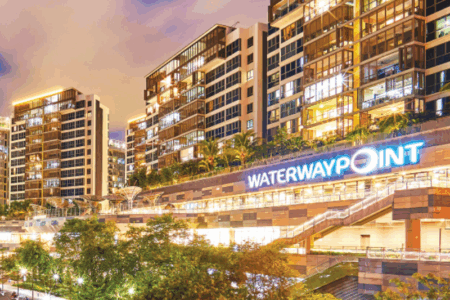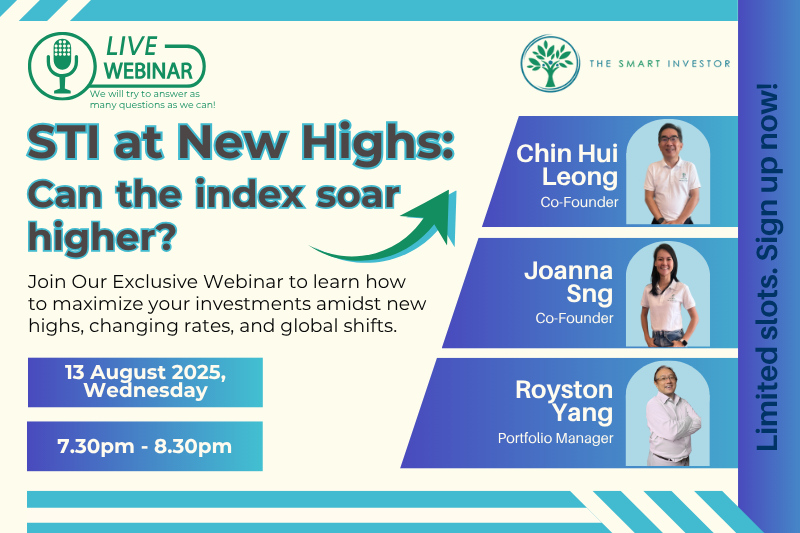SATS Ltd (SGX: S58) has undergone a significant transformation.
The provider of air cargo handling services and airline catering went through a punishing period during the COVID-19 pandemic from 2020 to 2023.
However, it was also during early 2023 that SATS completed its acquisition of Worldwide Flight Services (WFS), which helped to extend its reach and broaden its global presence.
The blue-chip group’s share price has climbed 7% in the past year, but is down 16.5% year-to-date as worries mount over Trump’s raft of tariffs.
Can SATS see its share price return back above S$5, similar to the pre-pandemic era of February 2018? Let’s find out.
Embarking on a new flight path
Even before the pandemic, SATS demonstrated pedestrian revenue growth.
Revenue grew at just a 2.3% compound annual growth rate (CAGR) from fiscal 2010 (FY2010) to FY2019 (the year before the pandemic), ending at S$1.8 billion.
The group’s return on equity (ROE), though, was high at 15.1% (see diagram below).
The pandemic caused a big “shock” and brought SATS revenue down sharply from 2020 to 2023, with the ROE falling to 10.3%.
Post-acquisition of WFS, the group is now preparing itself for “take-off”.
Although ROE for FY2024 came in at just 2.4%, revenue shot up strongly to S$5.1 billion for that fiscal year.
Back then, management was busy integrating WFS into SATS for it to operate as a combined entity and was determined to allow synergies to work its way through the organisation, thereby lifting net profit and ROE over time.
Capital Markets Day: FY2029 targets
Last November, SATS came up with a set of slides for its Capital Markets Day which detailed its long-term plan for growing its business.
Led by new CEO Kerry Mok, the group planned to leverage four sustainable tailwinds to help to grow its aviation solutions business.
First, SATS will leverage its wide network to capture robust air cargo growth.
The group will utilise its Singapore Hub (SG Hub) as an essential connector for global trade flows.
Next, global customers seek network-side solutions, and SATS can provide this to them.
Finally, the group envisions a strong recovery and growth in Asia-Pacific passenger volumes.
Below is a snapshot of SATS’ FY2029 goals.
In five years, SATS intends to grow its revenue to more than S$8 billion and also achieve an ROE exceeding 15%.
It will also work on improving its operating and net profit margins over time.
To do so, SATS not only plans to rely on the above four sustainable tailwinds but also has a “3 R” strategy to help unlock further value.
These include the repayment of loans, reinvest in capital expenditures (capex), and reward shareholders with dividends.
A strong set of earnings
SATS delivered a solid set of results for FY2025, reinforcing its synergistic transformation into a global player after its WFS acquisition.
Revenue rose 13% year on year to S$5.8 billion.
Operating profit leapt 94.8% year on year to S$475.7 million while net profit more than quadrupled year on year to S$243.8 million.
The ground handler generated S$669.4 million of free cash flow for FY2025, more than double the S$326.5 million back in FY2024.
A final dividend of S$0.035 was declared, bringing the total FY2025 dividend to S$0.05.
The total dividend was more than double the S$0.015 paid out in FY2024, the first year that SATS resumed its dividends after the pandemic.
SATS achieved an ROE of 9.8% for FY2025, significantly higher than the previous year’s 2.4%.
This ROE puts SATS on track to achieve its target of >15% ROE by FY2029.
Management has also stated that it will proactively monitor developments as uncertainty has risen because of the widespread tariffs.
This headwind could translate into lower air cargo and weaker consumer sentiment, resulting in poorer prospects looking ahead.
Encouraging business developments
Notwithstanding these headwinds, SATS is forging ahead with investments and initiatives to improve its business and position itself for further growth.
Last month, the group announced that it will invest more than S$250 million for SG Hub to upgrade its ground operations and cargo handling infrastructure at Changi Airport.
Of the S$250 million, S$150 million will be spent over the next five years for the renewal and expansion of SG Hub’s ground support equipment fleet.
The remaining S$100 million will be used for enhancing cargo operations over the next two years.
SATS also recently hired a chief digital officer, Sandeep Sakharkar, to lead the group’s digital transformation.
The focus will be to use technology to enhance transparency, optimise supply chain performance, and elevate the customers’ experience.
Back in April, SATS announced the upgrading of the Marina Bay Cruise Centre for around S$40 million to grow its capacity from 6,800 to 11,700 passengers.
Get Smart: Steady as she goes
SATS managed to improve its profit and ROE for FY2025 and has also nailed down its FY2029 targets during its recent capital markets day.
Sentiment remains weak at the moment as investors digest the tariff news and worry over the potential spillover into supply chains and consumer sentiment.
But if the group manages to continue growing its profits over the years, there is a good chance that its share price can continue its upward trend over time.
Explore Singapore’s top “evergreen” stocks with our FREE report. It spotlights 7 Singapore blue-chip stocks with solid dividends and growth potential. Click here to download it now to create a flow of dividend income, regardless of market conditions.
Follow us on Facebook, Instagram and Telegram for the latest investing news and analyses!
Disclosure: Royston Yang does not own shares in any of the companies mentioned.





